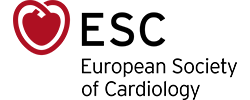Report prepared by Prof Karl Andersen with the assistance and advise from:
-
Prof Villi Gudnason, Ms Bylgja Valtysdottir, and Mr Thor Aspelund of the Icelandic Heart Association
-
Dr Magnus Jonasson director of Reykjalundur Rehabilitation clinic
-
Mr Hafsteinn Vidar Jensson and Ms Johanna S Kristjansdottir of the Directorate of Health
-
Icelandic Society of Cardiology
-
Statistics Iceland
National CVD Prevention Coordinator for Iceland: Karl Andersen
Karl Andersen
MD PhD FESC
Professor of Cardiology
Landspitali, the University Hospital of Iceland, Reykjavík IS-101
Icelandic Heart Association, Kópavogi, IS-201
Contact: email
Health care | Risk factors | Prevention methods | Prevention activities | Cardiac Rehab. | Future
Documents to download
Baseline information about Iceland
Government: Iceland is a parliamentary constitutional republic. Suffrage is universal from 18 years of age. The president is elected by direct popular vote for a term of four years, with no term limit. Most executive power rests with the Government, which is elected separately from the presidential elections every four years. Althingi is a legislative body of 63 members elected for a term of four years by popular vote. Judicial power lies with the Supreme Court and the district courts. The capital is Reykjavik, a city of 120,000 inhabitants. (1,2)
Country size in km² : 103,000 km²
Number of inhabitants : 325,010 (October 1st 2013)
Density of Population : 3 inhabitants per km²
Development of population : +0,71 % (Jan. 2012–Jan. 2013) per year
Gross domestic product (GDP) in 2011 per inhabitant : Nominal: 42,351 USD (15. position in the OECD-ranking), Adjusted for purchasing power parities (PPPs): 37,569 USD (15. position in the OECD-ranking)
Health care
The Icelandic health care system is publicly financed through taxes. There is equal access to all levels of care with no gate keeping system or referral required. About 20% of the total cost is carried by the consumers out-of-pocket, with 80% covered by the state driven social security system. The private sector, mostly specialist care and dental service is covered about 30-40% but primary care and hospitals are 90-100% covered. The current health care expenditure is 9.3% of GDP. The financial crisis of 2008 has put serious constraints on the financing of the state driven health care system. Only 1.6% of the total health expenditure is invested in organized public health and prevention programmes.
Risk factors
There has been a steep decline in the incidence and mortality from coronary heart disease in Iceland since 1981. For both men and women aged 25-74 years the incidence has dropped by 66% and the mortality decline has been 80%. This amounts to approximately 3.2% reduction in mortality per year. While 25% of this decline can be attributed to treatment of individuals, 73% is due to population risk factor improvements. The main contributions came from secular falls in cholesterol (32%), systolic blood pressure (22%) and smoking prevalence (22%) while an adverse trend of increasing obesity and diabetes has resulted in increasing death rates by 4% and 5% respectively, partly eliminating the gain in recent years.
Ris factor statistics (numbers representative for year 2010) :
(source: Icelandic Heart Association)
Main actors & prevention methods
The main actors are:
- The Icelandic Heart Association
- the Directorate of Health
- the Icelandic Society of Cardiology
- the Icelandic Cancer Society
- Reykjalundur rehabilitation clinic
Prevention activities
There has been a major success in reducing the prevalence of adult smoking with the current level of 14.3% contrasting sharply to the 47% seen only 30 years ago. This has resulted from strict regulations and legal interventions on tobacco control many of which were first of their kind. An example of this was the ban of having tobacco products visible at the point of sales in 2001 and a total ban of smoking in public spaces in 2007. Significant reductions of blood pressure and cholesterol are attributed to a change in the total salt and saturated fat consumption respectively, that have resulted from food reformulation following a nationwide campaign led by the Directorate of Health. There are several international activities that Iceland has participated in through the Icelandic Heart Association and the Icelandic Society of Cardiology, among them the World Heart Day, Go Red for Women and the European Heart Health Charter.
Cardiac Rehabilitation
Formal CV Rehabilitation has been available since 1982. There are three levels of secondary cardiovascular prevention provided. Stage 1 is a 2-4 week hospital based program in an outpatient setting provided to all patients hospitalized for acute coronary syndromes, post PCI and CABG. Stage 2 is a 4-6 week program intended for those who have completed stage 1 and are capable of performing a maximal exercise tolerance test. The participation in stage 2 rehabilitation is 90% among CABG patients, 19% among PCI patients. Stage 3 rehabilitation is an individually adjusted life-long guidance and support program in an open outpatient setting.
Aims for the future
Future plans include focus on interventions aimed at the increasing prevalence of obesity and diabetes, further interventions against recruitment of smokers and the treatment of those already addicted. The emphasis here will be socioeconomically deprived groups, minors and those with psychiatric disorders in attempt to close the gap in CV prognosis among these groups and the general population.
The content of this article reflects the personal opinion of the author/s and is not necessarily the official position of the European Society of Cardiology

 Our mission: To reduce the burden of cardiovascular disease.
Our mission: To reduce the burden of cardiovascular disease.